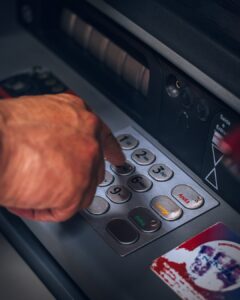The Basics of Fresh Forex Trading: A Beginner’s Guide
Forex trading, also known as foreign exchange trading, is the process of buying and selling currencies on the foreign exchange market. It is the largest and most liquid financial market in the world, with an average daily trading volume of over $6 trillion. Forex trading offers individuals the opportunity to potentially earn profits by speculating on the fluctuating exchange rates of different currencies.
If you are new to forex trading and interested in getting started, it is important to understand the basics before diving in. In this beginner’s guide, we will cover the essential elements of forex trading.
Understanding Currency Pairs:
In forex trading, currencies are always traded in pairs. The first currency in the pair is known as the base currency, while the second currency is the quote currency. For example, in the EUR/USD pair, the euro is the base currency and the US dollar is the quote currency. The exchange rate indicates how much of the quote currency is needed to buy one unit of the base currency.
Trading Platforms and Brokers:
To start trading forex, you will need to open an account with a forex broker. The broker provides you with a trading platform, which is the software used to execute trades. There are various trading platforms available, each with its own features and user interface. It is important to choose a reliable broker that offers a user-friendly platform and provides access to a wide range of currency pairs.
Fundamental and Technical Analysis:
Forex trading involves analyzing the factors that influence currency exchange rates. There are two main types of analysis used by forex traders: fundamental analysis and technical analysis.
Fundamental analysis involves assessing the economic, political, and social factors that affect a country’s currency value. Traders look at indicators such as interest rates, GDP growth, inflation rates, and geopolitical events to make informed trading decisions.
Technical analysis, on the other hand, involves studying historical price and volume data to identify patterns and trends. Traders use various tools and indicators, such as moving averages, support and resistance levels, and Fibonacci retracements, to predict future price movements.
Risk Management:
Like any form of trading, forex trading involves risks. It is crucial for beginners to understand the importance of risk management. This includes setting a stop-loss order, which automatically closes a trade if it reaches a predetermined loss level. Traders should also determine their risk tolerance and avoid risking too much capital on a single trade.
Leverage and Margin:
Forex trading offers the opportunity to use leverage, which allows traders to control larger positions with a smaller amount of capital. Leverage is expressed as a ratio, such as 1:100 or 1:500. For example, with a 1:100 leverage, a trader can control a position worth $100,000 with a $1,000 deposit.
However, leverage can magnify both profits and losses. While it can increase potential gains, it also increases the risk of significant losses. It is important for beginners to use leverage cautiously and understand the potential consequences.
Demo Trading:
Before risking real money, it is advisable for beginners to practice trading on a demo account. Most brokers offer demo accounts that simulate real market conditions. This allows traders to familiarize themselves with the trading platform, test different strategies, and gain confidence before entering the live market.
Continuous Learning:
Forex trading is a dynamic and ever-changing market. To succeed as a trader, it is essential to continuously learn and improve your skills. This can be done through reading educational resources, attending webinars, and following experienced traders. It is important to stay updated with market news and events that may impact currency prices.
Conclusion:
Forex trading can be a rewarding venture for those who are willing to learn and put in the effort. By understanding the basics of forex trading, including currency pairs, trading platforms, analysis techniques, risk management, leverage, and continuous learning, beginners can start their journey with a solid foundation. Remember, forex trading requires patience, discipline, and a systematic approach.






